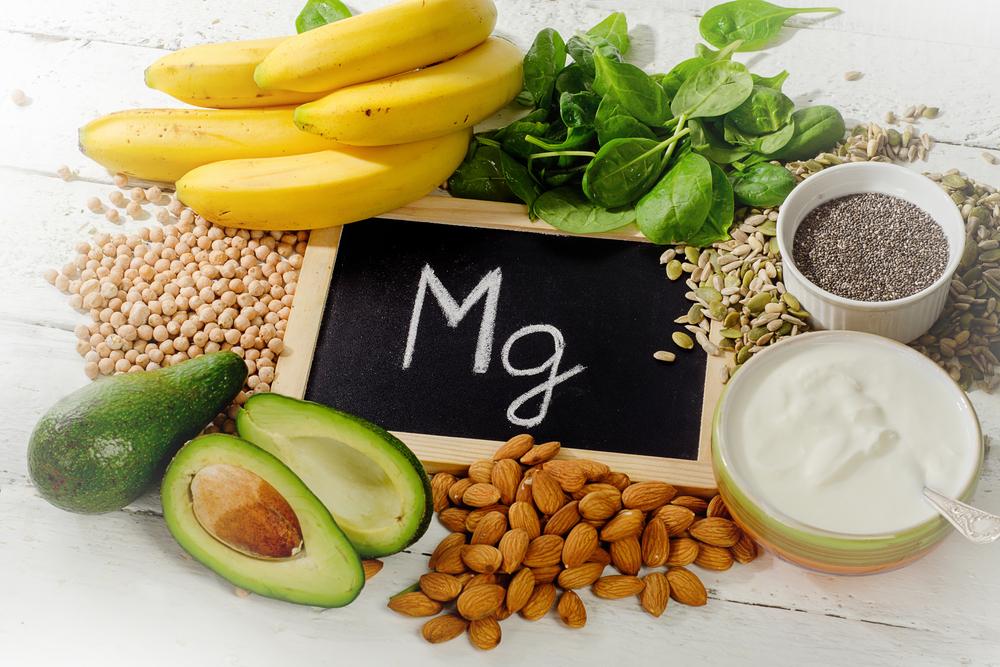Calcium is one of the most abundant minerals in the body. We tend to notice it for its role in bone health, but it’s also involved in muscle contraction and cardiovascular health. There’s a lot of information out there around calcium, especially in the growing dog, so let’s take a look at its function, balance and some of My Pet Nutritionist’s favourite sources.
What is Calcium?
Calcium is a metal with the symbol Ca, it is also defined as an electrolyte. Calcium ions play a role in:
- Physiological and biochemical processes in the body
- Signal pathways
- Messengers in neurotransmitter release from neurons
- Contractions of all muscle cell types
- Cofactors in many enzymes
- Fertilisation
Calcium Balance
Only a small percentage of total body calcium is needed for the above roles, the rest is stored in bones and teeth for structural support. When calcium intake is low or malabsorbed, the body will pull stored calcium from bones to maintain normal functioning. This is what leads to poor bone health – the body is always cashing in on its stores!
Calcium balance or homeostasis is regulated by parathyroid hormone, calcitriol and calcitonin. When blood calcium levels drop, the parathyroid glands secrete parathyroid hormone (PTH) which stimulates the conversion of vitamin D in the kidneys to its active form calcitriol. This decreases urinary excretion of calcium but raises urinary excretion of phosphorus. Elevated PTH also promotes bone resorption (break down) which releases calcium and phosphorus into the blood from bones. Higher calcitriol concentrations increase intestinal absorption of calcium oh phosphorus too!
As calcium levels normalise, PTH secretion stops and the thyroid gland secretes the hormone, calcitonin. This reduces bone resorption and well as calcium absorption and promotes urinary calcium excretion again.
Bone Health
The skeleton is essential as a supporting framework. It consists of strong, mineralised bone which form a sophisticated system to facilitate movement. Bone is a light, yet strong connective tissue consisting of around 30% collagen and other matrix proteins with around 70% minerals. These minerals obviously include calcium and phosphorus but magnesium, sodium and potassium are also present in conjugated form.
Also known as ossification, bone formation is a process where new bone is produced. Look at any large breed and it’s clear to see how much new bone needs to be produced from birth to full skeletal maturity. Bone starts as a cartilage model which gets slowly replaced. Osteoblasts are the cells that form new bone. They secrete osteoids. Osteoid tissue is simply unmineralized bone tissue. Soon after the osteoid is laid down, inorganic salts (calcium and phosphorus) are deposited which forms the hardened material that we know as bone. Bone formation proceeds outwards from ossification centres; short bones tend to have one in the middle whereas long bones typically have three, one at each end and one in the middle. Ossification, or bone formation continues until there is a thin strip of cartilage left at each end of the bone. This is known as the epiphyseal plate, or growth plate in the dog world. When the bone reaches full adult maturity, the cartilage is replaced with bone and “sealed” for want of a better word.
It is widely recognised that bone mass and density are determined by various concurrent factors, such as genetics, hormones, physical activity, and certainly, nutrition. While genetic factors have a critical role in growth and peak bone development, an adequate intake of bone nutrients represents the main factor for the full expression of a given genetic potential and for bone maintenance during adulthood.
An optimal calcium intake is necessary for bone health at all stages of life. Dietary requirements for calcium are determined by the need for bone development and bone maintenance, which vary throughout life, being higher during puppy-hood, adolescence, during pregnancy and lactation, and in the aging dog.
The risk of bone loss is increased in:
- Low calcium diets,
- Low protein diets,
- Hyperthyroidism,
- Oestrogen deficiency (of interest in spayed females)
Findings Here
Findings Here
Findings Here
Too Much Calcium
Lifelong physical activity with adequate calcium and vitamin D slow the rate of bone loss. Interestingly, in humans, supplemental calcium leading to excessive calcium intake has been seen to reduce the bone growth stimulating effects of PTH. Furthermore, PTH suppression caused by high calcium intake is thought to reduce magnesium absorption.
However, one study following dogs for a 40-week period, notes that
adult dogs
are capable of regulating calcium balance with no adverse effects on health. It was concluded that when exposed to increased Ca levels, dogs will reduce intestinal absorption, so excretion increases via faeces and urine. It is posited that this is an evolutionary adaption, because dogs are inherent scavengers likely to consume large, infrequent meals high in Ca-rich bony material, rather than Ca-deficient foods. This was explored further, and adult dogs fed a Ca deficient diet did not adjust their Ca excretion leading to negative calcium balance.
Findings Here
That said, this study was based on a dry diet and the authors themselves posit digestibility as a limitation.
“Commercial dog diets contain raw ingredients and undergo processing such as extrusion and cooking, which generally limit Dry Matter digestibility, and consequently lower Ca availability.”
They suggest that home-prepared diets with high digestibility may increase Ca absorption and result in a positive Ca balance instead.
The bottom line? Opt for a fresh-food diet with sources of calcium and always speak with a qualified practitioner before considering supplementation.
Muscle Contraction
The muscular system is made up of muscle tissue and is responsible for functions such as maintenance of posture and control of various circulatory systems. This includes the beating of the heart and the movement of food through the digestive system.
The muscular system is strongly associated with the skeletal system in facilitating movement. Both voluntary and involuntary muscular system functions are controlled by the nervous system.
Muscle is a highly specialised soft tissue that produces tension which results in the generation of force. Muscle cells, or myocytes, contain myofibrils comprised of actin and myosin myofilaments which slide past each other producing tension that changes the shape of the myocyte. Numerous myocytes make up muscle tissue and the controlled production of tension in these cells can generate force.
Calcium and ATP (that energy molecule) are co-factors that are required for the contraction of muscle cells. Calcium triggers the contraction.
It all starts in the nervous system, the brain sends a message through the nervous system for the muscle calcium gates to open, flooding the myofilaments with calcium. The sudden increase sets off an energy consuming chain reaction causing the myofilaments to change shape and shorten; this leads to contraction. When the “Go” signal stops from the nervous system, the calcium gates close, and calcium pumps quickly send calcium packing! As the calcium concentration falls, the muscle returns to a relaxed state.
Calcium states are worth considering in digestive function for many reasons, but also physiologically, when muscle function contributes to the movement of food through the digestive system.
Cardiovascular Syste
Calcium’s role in muscle function also includes maintaining the action of the heart muscle. Calcium particles enter the heart muscle cells during each heartbeat and contribute to the electrical signal that coordinates its function.
In addition, it is thought that calcium also regulates the activity of sodium and potassium in heart function.
Findings Here
In some cases, calcium handling can become aberrant in the heart, contributing to heart rhythm disorders. Heart rhythm disorders happen when the electrical communication between cells becomes uncoordinated or when groups of cells spontaneously produce additional electrical signals.
Abnormal calcium movement may directly impair contraction or relaxation of the heart, hindering the normal pump function.
However, high levels of calcium are more commonly associated with poor cardiovascular health.
Polymorphisms of calcium sensing leading to elevated calcium levels are associated with cardiovascular disease – this suggests that calcium plays a causative role.
It is thought that circulating calcium levels directly promote vascular calcification which is why calcium supplementation use is associated with increased risk of coronary artery calcification.
Of the many systematic reviews, it is always concluded that calcium should be gained from dietary sources as opposed to supplementation, unless discussed with a qualified practitioner.
Other Roles of Calciu
In the body there are a number of enzymes and proteins that are dependent on calcium. They include:
- ATP Synthase – produces and activates ATP (energy molecule)
- Fatty Acid Oxidation – burns triglycerides and lipids for fuel
- Lipolysis – breakdown of fat cells
- Glycolysis – burns glucose for fuel
- 5-HTP – melatonin production, serotonin production, involved in rest and sleep
- Parathyroid Hormone – bone turnover, bone mineral density
- Calcitriol – active form of vitamin D, promote bone density, support immune function, govern hormone regulation
- Calcitonin – regulate calcium balance, reduce calcium absorption.
In response, calcium imbalance can manifest in many ways:
- Energy shortage
- Hyperlipidaemia
- Obesity – visceral adiposity
- Anxiety, poor memory consolidation
- Hyperarousal
- Glycation
- Insulin resistance
- Osteoporosis
- Increased bone loss
- Decreased bone density
- Poor immune function
- Cardiovascular dysfunction
Causes of Calcium Imbalance
- Vitamin D imbalance
- Kidney disease
- Liver disease
- Thyroid or parathyroid gland issues
- Diets rich in phytate and/or oxalate
- Primary hyperparathyroidism
- Cancer
- Certain medication
- Glucocorticoids promote calcium depletion
- High sodium diets – when sodium leaves the body it takes calcium along with it
Consider the, thankfully rare, disease in horses. Big head disease, more common in countries like Australia, is also known as bran disease or Miller’s disease. The colloquial names demonstrate immediately the dietary link. Clinically termed hyperparathyroidism, this condition affects the skeleton of horses.
The horse’s bones slowly demineralise due to the low levels of calcium found in their system.
The low calcium levels are usually due to one of two reasons.
1) Calcium bioavailability due to high levels of phytates in bran,
2) Calcium bioavailability due to oxalate containing grasses.
Sources of Calcium
- Raw meaty bones
- Sardines with bones
- Salmon
- Kale (cooked)
- Chia Seeds
- Bok Choi
- Egg
- Broccoli
- Liver
The bottom line?
Opt for a fresh food diet for your dog with plenty of bioavailable source of calcium. Furthermore, issues appear to arise through
blind supplementation of calcium, so if you are concerned about your dog’s health, then check out our services and we can help you put a plan together and establish whether there is a place for supplementation.
Thanks for reading,
MPN Team x






